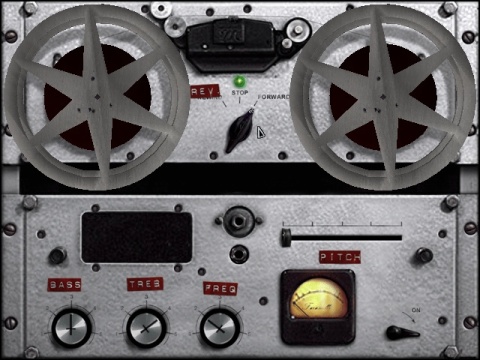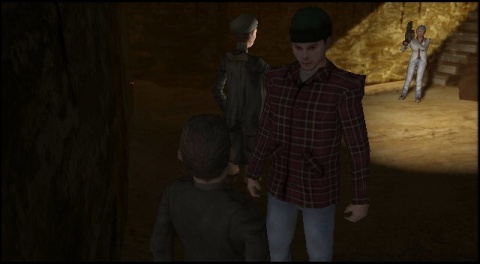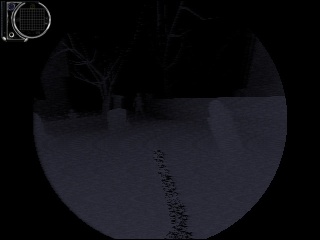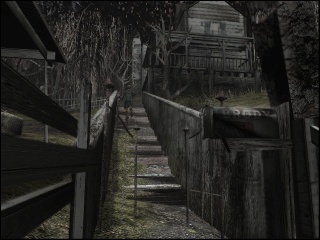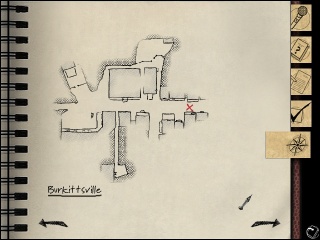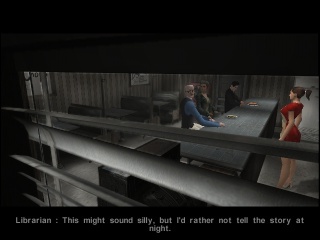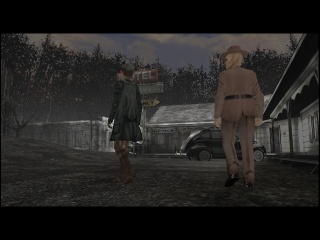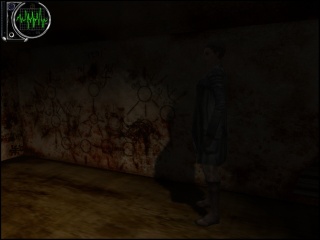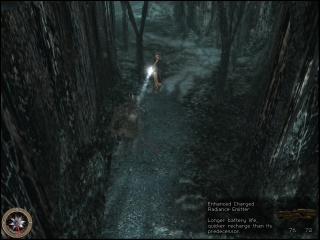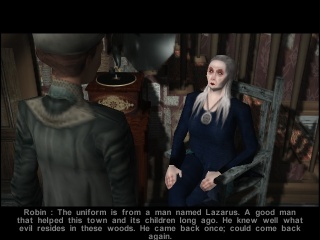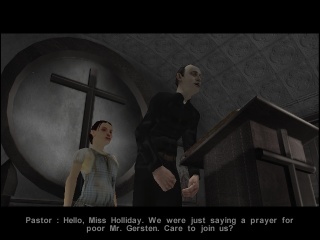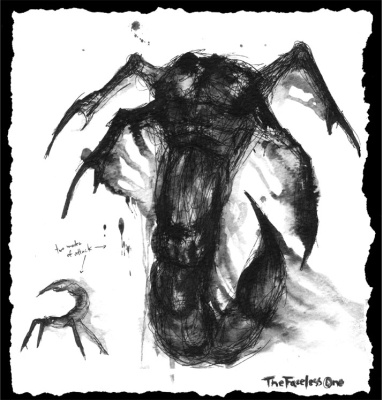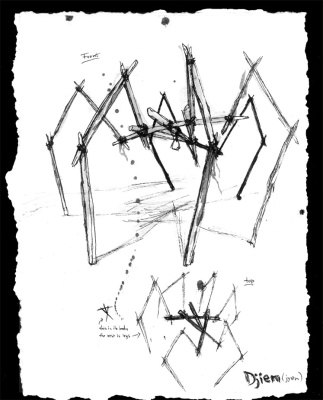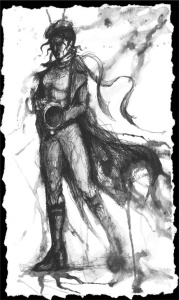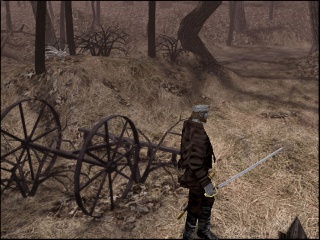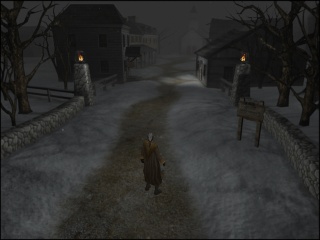
Terminal Reality Horror Games
|
Page 1: |
Page 2: |
Page 3: |
Page 4: |
Page 5: |
|
Page 6: |
Page 7: |
In 2000, GoD had won the rights to video game adaptions of the then attractive Blair Witch franchise. In place of a nervous shaky cam, however, the static views of the Nocturne engine were chosen to draw a much less hysteric picture of events taking place in the history of the town of Burkitsville, or Blair, depending on the time period. Terminal Reality delivered not only the technical groundwork shared by all three episodes, which were to be released within weeks after each other, but also took care of creating the first story.
Since the developer then already had made a first experience in the world of interactive horror, a genius idea stood at the beginning of development: What if the Spookhouse was send to investigate the case of the mass murderer of children, Rustin Parr, whose claims that the Blair Witch had forced him to his evil deeds shocked the little secluded town even more so combined with the gruesome rituals he performed on the victims?
The Stranger isn't exactly enthusiastic about being sent on a hunt for myths and ghosts and prefers to stay at the Spookhouse headquarters as possible reinforcement, so Elspeth Holliday travels alone to Burkitsville. Using a fabrication about her niece being abducted from a nearby village as a cover story, she starts to question the inhabitants of the slightly backwards settlement with only 2 phone lines, but not all of them are cooperative. Wherever she goes, Holliday meets with a distinctly rural, uncomfortable atmosphere, especially the sheriff appears very suspicious of Elspeth and wants her out of his town all too eagerly. Many of the other citizens are only slightly more friendly. Yet she also finds allies in the inexperienced but eager deputy and especially the old librarian Peter Durant, who supplies her with much historical information about the town, its surroundings and the many myths associated with the location.
However, with the judge responsible for the Parr trial disappeared altogether just before her arrival, Parr himself unavailable, the only child that survived the incident mentally scarred and silent and the murderer's home in the woods burned to the ground, the case seems almost helpless and thus demands paranormal means of solving.
Elspeth carries with her most of the gear she supplied Stranger with in Nocturne and some more. The SPS (Spectral Proximity Sensor) is supposed to capture spirit activity in the vicinity, giving out an eerie scratching sound, not unlike the radio in Silent Hill, but also visual feedback on an oscilloscope. The night vision goggles have been improved for more battery lifetime, so their use is now limited only by daylight. The Doc has also developed a new generation Sun of God, including a more portable handgun. In light of all that high tech stuff, the ordinary compass comes off like a relic in Elspeth's inventory, but it does come in handy in the woods.
Especially in the second half of the game, there's a lot running around the forest, which grows more and more demented the closer Holliday gets to the truth. An unreliable map, strange paths that obstruct the sense not only for space but also for time— Blair Witch Volume One knows ways to mess with your mind without employing an immersion-breaking game mechanic like the panic meter in Eternal Darkness. What it apparently does need, however, are Doc Hollidays frequent and annoying analyzing comments that spoil the surprise more often than not. Without those, it would have been even more unsettling When you seem to hear additional footsteps while walking alone in the woods, or when suddenly your map doesn't match up, anymore.
After stumbling through the treacherous woods for a while, Elspeth eventually meets a white owl that leads her to the hut of native american hermit Asgaya, who suggests to her that the evil in the woods might be older than the Blair Witch myth itself, and teaches her the ways of the forest. Now the iconic stick figures come into play, which are actually talismans capable of opening passages not only through time, but even into other planes of existence.
Suiting for Doc Holliday's character, fighting play a lesser role than it did in Nocturne. Instead the game counts on its adventure elements, most of the time is spent investigating, with some typical adventure style puzzles, and also a "mini game" or two, where Elspeth has to use her recorder to find ghastly voices otherwise unhearable by the ears of the mortal. Even when Elspeth is forced to fight, she travels with much lighter weaponry as the Stranger (much to her colleague's amusement) and mostly has to put up with spirit creatures rather than downright monsters. This incidentally also leads to less gruesome combat, except for the tutorial training that features many of the creatures fought in Nocturne and a nightmarish foreshadowing episode in the beginning.
Both the combat and puzzles have a seperate setting for their difficulty, providing ample means to adjust the game to one's own preferences. Combat difficulty mostly effects quantity of enemies, while the harder puzzle mode adds a couple of more steps to some solutions, comparable to the different modes in point&click adventures like Monkey Island 2. At times it feels, however, like this mode became a victim of the tight development schedule, as there are long stretches of the game that don't show any differences whatsoever. It certainly wouldn't have hurt to skip Holliday's more spoiling comments in the woods for hard mode. Nonetheless, setting puzzle difficulty to hard is strongly recommended, the game is still easy enough as it is.
The Doc's recorder
As Rustin Parr is running on the Nocturne engine, the technology remains virtually the same, just with additional filters for character rendering. Still, the way the plot is staged seems more mature and experienced than was the case in Nocturne. The game uses camera angles very consciously and with dramatic effect, like the view through a half-opened shutter into the Burkitsville's sole restaurant where Elspeth is conversing with the villagers, or the focus on the mailbox with the name "Brody", when she approaches the house of the surviving kid's family.
Like Nocturne, the game also suffers from the engine's weaknesses, though. Pathfinding in cutscenes is still flawed, despite a quick and dirty fix that just teleports the characters to their destined position when they're deemed stuck. So next to refined cinematic techniques, there stand situations where Elspeth turns in circles multiple times behind an NPCs back before initiating conversation with him, who of all things greets her with a surprised "Oh, snuck up on me huh?", or when characters are supposed to cut each other's sentences off, but an awkward pause completely ruins the scene (an issue video games don't seem to have quite solved even today).
The use of sound in Blair Witch Volume One is just as indebted to horror film techniques. While questioning the inkeeper of her hotel, he wants to convince Holliday to stay out of the woods, because of "her", trying to avoid calling a name. Just when she loses her patience and bluntly inquires about her being the Blair Witch, thunder strikes, and a storm breaks loose. Later that night she finds all villagers turned into daemites, disgusting parasites that eat into a human's spine to replace their head. While running through the dark of the night and hunting down all of them, one hears nothing but the rain and the eerie sounds of the creatures, until suddenly the church doors swing open and the organ starts to play an unsettling melody. But as soon as Holliday sets foot into the church, the playing ends with a bang, as if someone suddenly threw down the lid.
Blair Witch Volume One: Rustin Parr is an interesting crossover for both the Blair Witch and Nocturne franchises, although fans of the movie might dislike the scientific, definite view Spookhouse holds towards paranormal events and deem the plot overexplained. On the other hand, the game is incorporates the Blair Witch myth and the surrounding material so well that it gives the whole thing a new angle to look at. (Except for the Zombie dogs, which are just silly.) There even is a clever direct reference to the film, which of course is set many decades after the game. It's also a nice variation on the Nocturne formula with its more quiet and tighter narration. Only running around in the woods goes a bit overboard in the second half of the game, and overall it's a rather short experience. But of course Volume One was supposed to be played in short sequence with the following two games, which were all sold at budget price and later bundled into one package.
Where have I seen those guys before?
Quick Info:
|
Developer: |
|
|
Publisher: |
|
|
Designer: |
|
|
Genre: |
|
|
Themes: |
Blair Witch Volume One
Blair Witch Volume One
Blair Witch Volume One
Blair Witch Volume One
Blair Witch Volume One
Blair Witch Volume One
Blair Witch Volume One
Blair Witch Volume One
Blair Witch Volume One
Concept Sketches
The original Blair Witch Project film references three major legends associated with the witch. Before Rustin Parr's crimes stood the abduction of Robin Weaver and the following massacre at Coffin Rock, as well as the original Elly Kedward witch process. Accordingly, two more episodes in the Blair Witch video game series were developed, although not by Terminal Reality. Both set well before the founding of Spookhouse, none feature any of the Nocturne characters. Even a meeting through a time passage Holliday had with the protagonist of Volume 3 does not occur in that game. The individual developers made an effort to form a coherent continuity, but according to Terminal Reality production lead Jeff Mills, time constraints limited the amount of interaction the three teams could have during the development.
Volume 2, The Legend of Coffin Rock, was developed by Human Head Studios and takes place during the American civil war. The protagonist is a soldier who is killed during the fighting, but found and saved by a young girl named Robin Weaver. Soon after, Robin disappears. A searching party is found brutally murdered and bound around Coffin Rock. Only the soldier, suffering from amnesia and now simply called Lazarus because of his miraculous healing, dares to head into the woods in search for the girl.
Ritual Entertainment created The Elly Kedward Tale, which takes players farther back in time until 1785, the year the Blair Witch legend came to be. Players play the role of Jonathan Prye, a witch hunter who investigates the case of Elly Kedward, a woman that had been convicted for witchcraft. Banished from the town during winter, she was brought into the woods, tied up and left to die. But the accused witch disappeared, soon to be followed by all the children in town. Only after these events Prye arrives in Blair, left by most his owners and now little more than a ghost town.
|
Page 1: |
Page 2: |
Page 3: |
Page 4: |
Page 5: |
|
Page 6: |
Page 7: |

